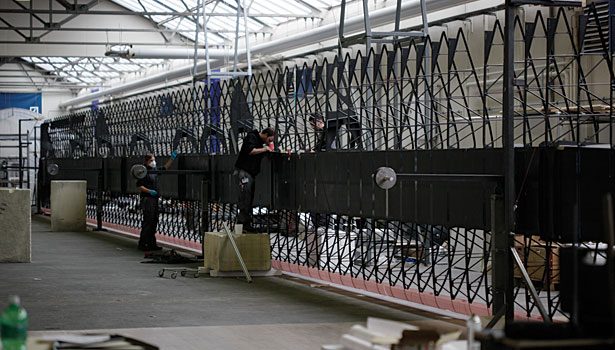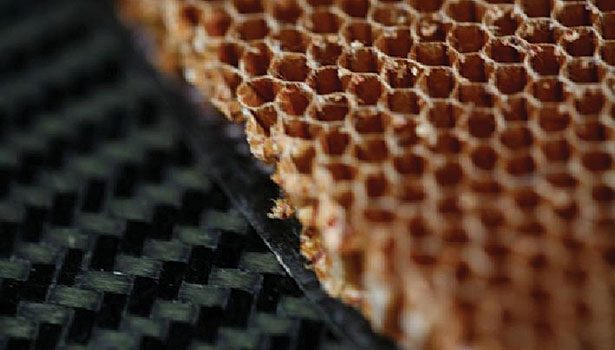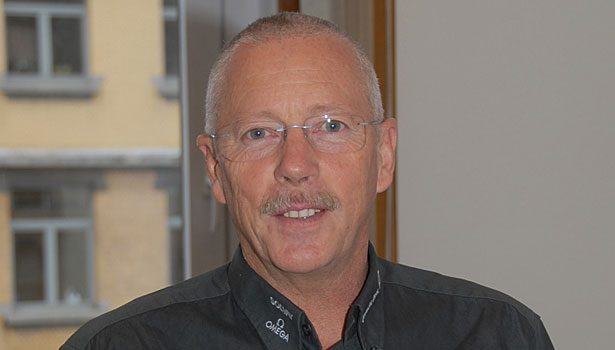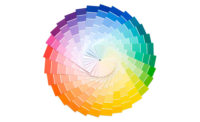It’s not faster than a speeding bullet. Nor is it more powerful than a locomotive. In fact, flying at about 45 miles per hour, the solar-powered aircraft known as Solar Impulse isn’t the quickest way to fly, but it may be the most eco-friendly.
And it’s left some people scratching their heads. “It’s a bird… it’s a plane, it’s…?” Last month, as Solar Impulse flew from Dallas to Phoenix, the local 911 call center received dozens of reports of UFO sightings thanks to the unusual aircraft that appeared to hover on the desert horizon. But it’s not alien technology – it’s solar – and that’s exactly the point. Alternative energy is available today, and Solar Impulse is an excellent showcase for the innovation that makes it possible, including advanced coatings, films and adhesives.
Bertrand Piccard and Andre Borschberg, the pilots and the visionaries behind Solar Impulse, say the purpose of the project was not to create a commercial plane that can carry hundreds of passengers. In fact, it only carries a single pilot at a time. The point, they say, was to create a plane that carries a message about alternative energy and the technology that is available right now.
To prove it, Solar Impulse flew across America this summer, making stops in several major cities and traveling more than 5,000 kilometers (over 3,100 miles) without a single drop of fossil fuel. In 2015, a second-generation plane will fly around the world. Solar Impulse required years of research and development, a team of 75 dedicated people and dozens of partners – not to mention unique coatings and films provided by Brussels-based Solvay.
Solvay signed onto the Solar Impulse project in 2004 as the first partner. Today the company is still the main partner and an important supplier to Solar Impulse. Solvay’s strong expertise in fluoropolymers and plastics helps address the two major challenges of creating a plane that flies only by solar power: keeping things lightweight and managing the energy chain.
Some of Solvay’s advanced materials address these issues through more common plastics applications, such as the ultra-lightweight plastic nuts and bolts that are used in place of metal fasteners. However, the project also required the company to develop new, micro-thin, lightweight films and coatings from several of the products in its existing portfolio.
“Weight is an obsession with Solar Impulse,” explained Claude Michel, the head of the Solvay Solar Impulse partnership. According to Michel, for every 8 kg (17.6 lb) – whether it’s 8 kg of plane, pilot or equipment – Solar Impulse needs 1 square meter (~ 3.3 square feet) of solar panels. The solar panels are spread across the upper portion of the aircraft’s horizontal stabilizers and wings which, at 63 meters (~ 207 feet), are the span of a commercial jet. That wingspan accommodates enough panels that Solar Impulse can carry just 1600 kg (3,500 lb). A typical four-engine propeller-driven commercial airliner weighs about 30 times as much.
“We are very aggressive in innovating to reduce weight reduction. When we speak of materials we talk about grams not kilograms,” Michel said. To lend lightweight components strength as well as protection from the elements, films and coatings become critical. In fact, Solar Impulse has some of the strongest, thinnest and lightest films in the world.
Fluoropolymer Protects the Photovoltaic System
Solvay’s Halar® ECTFE, a copolymer of ethylene and chlorotrifluoroethylene, is specially processed for Solar Impulse into a film that is just 20 microns, or about .001 inches, thick. Traditionally designed for use as a coating material in protection and anti-corrosion applications, Halar was adapted in 2008 to be used aboard Solar Impulse, where it is the photovoltaic front sheet.
The film serves the very important role of encapsulating the solar panels that form the upper surface of the plane’s wings. Halar film is transparent and resists yellowing, allowing sunlight to reach the photovoltaic system. It also protects the solar cells from stressors, such as solar radiation, and improves mechanical performance.
“From an aerodynamic point of view, the top of a plane’s wings supports its weight and that of the cargo. Since Solar Impulse’s solar panels are positioned on the upper surface of its wings, they support all of the weight. Halar adds a layer that protects the cells,” Michel explained.
Halar resin is made at Solvay’s manufacturing facility in Orange, TX. It is then shipped to Newark, DE, where it is flat-die extruded into a film by Ajedium, Solvay’s thermoplastic films division. Development was challenging, according to Films Product Manager Kathleen Cerchio.
“The final film product had to be 20 microns in thickness with excellent planarity and without creases or folds in winding,” Cerchio said. “Excellent roll conformance is critical. Compare the thickness of Halar film at 20 microns to that of a human hair, which is approximately 100 microns.
After extrusion, the film is then shipped to a third-party vendor for corona treatment, a surface modification technique that improves adhesion. “In the end we have a Halar film that is even in thickness, about 4 feet wide and ready for assembly,” Cerchio said.
Paolo Toniolo works for Solvay’s Specialty Polymers group and previously worked on the technical development team for Solar Impulse. He said the film replaced a competing product that weighed just a little bit more. “Getting Halar to be as thin as possible and easy to use were the deciding factors in its selection,” he added.
“The Solar Impulse project happened at the perfect time in terms of product development,” Halar Global Product Manager Philippe De Donder said. “Our research and innovation group and technical teams were working on the Halar product for photovoltaic frontsheets, in on-the-ground markets where flexibility or weight reduction are a must. Halar is a natural fit for these markets, providing a perfect combination of properties. Solar Impulse acted as a catalyst to our developments.”
Halar also provides some waterproofing characteristics. Currently Solar Impulse only uses Halar as a frontsheet that covers the upper part of the wings. However, a second-generation plane, which is currently being built for the round-the-world tour in 2015, will use Halar as a backsheet, too, to fully encapsulate the cells, thus providing increased weather resistance.
“Right now Solar Impulse cannot fly in clouds, rain or humidity. It would cause the electrical circuits to short,” Solvay Project Manager Michel said. The next-generation plane will be able to withstand such elements thanks, in part, to Halar.
Taping the Solar Panels Together for Maximum Aerodynamics
Another partially fluorinated polymer, Solvay’s Solef® PVDF is used to tape together the photovoltaic cells. “When the solar panels are fitted to the upper surface of Solar Impulse’s wings there are gaps a few millimeters thick between the panels. Solef PVDF is taped to the surface of the PV cells and covers the gaps. This improves aerodynamics,” said Solvay Specialty Polymers Technical Development Manager Srinivasan Padmanabhan.
Solef PVDF is a family of semi-crystalline fluoropolymers with a balance of physical properties that qualify them for high-performance service in a wide range of applications. They possess the characteristic stability of fluoropolymers when exposed to harsh thermal, chemical and UV environments.
Solef is produced in Tavaux, France, and has no adhesive properties. Padmanabhan said it must be shipped to the Newark Ajedium site where it’s turned into a tape called Solstick. The tape is clear, allowing the light to reach the entire surface of each solar panel and, Padmanabhan said, it’s easy to use. “Solstick can be applied just like a normal tape you’d use in the office,” he explained.
Solef PVDF is used in a variety of other applications including films and membranes, as a binder in lithium ion batteries (including those aboard Solar Impulse), in piping systems for the oil and gas industry and water supply systems, for jacketing copper plenum cables and for plenum rated optical fiber raceways. Solef can also be used as a component in backsheet laminates for photovoltaic modules. Though it’s not used in this capacity aboard Solar Impulse, it offers an excellent combination of properties from UV stability to water vapor permeation resistance.
Plastic Coating Gives Strength to Paper-Light Wing Structure
Of all of Solar Impulse’s features, perhaps most noticeable are its unusually large wings. Stretching 63 meters long, they are comparable to those of an Airbus or Boeing commercial jet. And, yet, the entire plane weighs less than a Toyota Highlander. Building the wings to be light as possible was essential.
“Solar Impulse’s wing span is formed from a lightweight paper honeycomb sandwiched between two layers of carbon fiber,” Michel explained. The paper honeycomb structure is coated with Torlon®, an aqueous solution polyamide-imide (PAI) with the highest strength and stiffness of any thermoplastic up to 275 °C (525 °F).
Chris Wilson, Solvay’s business manager for Ultra-Performance Materials, which includes Torlon PAI, explained, “Torlon resins serve as an adhesive that sticks together the pieces of paper that create the honeycomb. Imagine thousands of strips of paper sitting on their edges all stacked together. In between each one is a strip adhesive made using Torlon PAI with each strip of adhesive taking up very little surface area. When all of the Torlon strips are in place and the bonds cured, the whole structure is stretched apart. Strong, yet flexible, bonds remain where the Torlon resin was placed; that creates the honeycomb.”
The honeycomb paper is typically made of high-performance aramid polymers for which Torlon PAI is the perfect adhesive, according to Wilson. “Aramid polymers and Torlon polyamide-imide (PAI) are chemical brethren. PAI is intrinsically reactive, which allows it to make a strong and durable bond that’s ideal for this application,” he said.
Torlon resins have been used in similar aerospace applications for more than a decade. Wilson said, “It has excellent adhesive properties, forms a strong, yet flexible, bond, offers good resistance to moisture cycling, provides outstanding chemical resistance and has excellent flame-retardant properties, all of which are important characteristics for aerospace applications. For example, when a plane is on a runway it may encounter very high humidity. When it’s at high altitudes, there could be very low humidity. It might also undergo rapid temperature changes. Torlon’s ability to withstand cycling makes it superior to alternative technologies.”
In addition to adhesives products, Solvay also offers a version of Torlon PAI that can be injection-molded or extruded into parts. Components made from Torlon PAI are also found on the Solar Impulse and on commercial aircraft as well. Wilson noted that parts made from Torlon resins save weight and have the ability to withstand many solvents, lubricants and chemicals that are associated with airplanes.
“For example, some of the chemical agents used to clean commercial airliners are so aggressive that they will attack metals. This combination of durability and weight savings is a key reason a lot of fasteners, brackets and other mechanical parts on aircraft are converting to plastics like Torlon PAI, which can resist chemicals, including strong acids and most organics,” he added.
“Whether it’s used as an adhesive or in a part, Torlon has a lot of properties that make it ideal for use in aircraft. As is the case with most ultra-performance polymer applications, it’s never one attribute that wins the day; it’s a combination,” Wilson concluded.
Aside from its use in aerospace applications, Torlon is also commonly used in high-end, name-brand frying pans. Donna Riley, Plant Manager at Solvay’s Greenville site, said, “Most people probably wouldn’t realize they have Torlon in their own kitchens, but it’s been used in frying pans for more than 30 years because of its unique ability to adhere non-stick coatings to metal and retain that bond even at very high temperatures.”
Chemistry Saves the Day
From your kitchen pots and pans to the wings of Solar Impulse, new technology continues to evolve to meet the needs of society. During a special Solar Impulse presentation at the Chemical Heritage Foundation in Philadelphia’s historic district in June, Michel observed, “Solvay’s founder, Ernest Solvay, was not just an industrialist. He wanted to improve society for human beings. That is still a huge part of the company’s culture today.”
Pilot Bertrand Piccard, the grandson of the Swiss physicist, inventor and explorer Auguste Piccard, often explains, “My family has shared these values with Solvay since the 1920s when Ernest Solvay supported my grandfather’s exploration of the stratosphere. Solvay was Solar Impulse’s first partner, joining the project even before the design of the solar airplane, while very few people believed in the feasibility of my vision.”
The company prioritizes research projects and partnerships that address societal needs and sustainability. For example, its Bristol, PA, laboratory works on projects ranging from water conservation solutions for agricultural applications to flexible electronics.
It seems fitting then that in 2013, the year marking the 150th anniversary of Solvay, Solar Impulse soared across America on a historic mission. From the initial Solar Impulse test flights at Silicon Valley’s Moffett airfield, to its final landing at John F. Kennedy International Airport in July, Solar Impulse has carried the message that chemistry plays a major role in making alternative fuel a reality.
“Solar Impulse is a flying laboratory,” Pilot André Borschberg said. Piccard added, “Sometimes you will be told things are impossible. Sometimes it’s true because you have laws of physics that you have to respect. But most of the time people believe something is impossible just because they had never dared to try.”
So what if solar flight isn’t faster than a speeding bullet (yet) or more powerful than a locomotive (yet)? In less than 10 years since the project’s start, Solar Impulse has flown over more European cities than most travelers will ever see, completed an international flight from Morocco to Spain, and now it has traveled across the United States. Who needs a superhero? Two adventurous pilots, some engineers and some outstanding chemistry just might be enough to save the day.











Report Abusive Comment